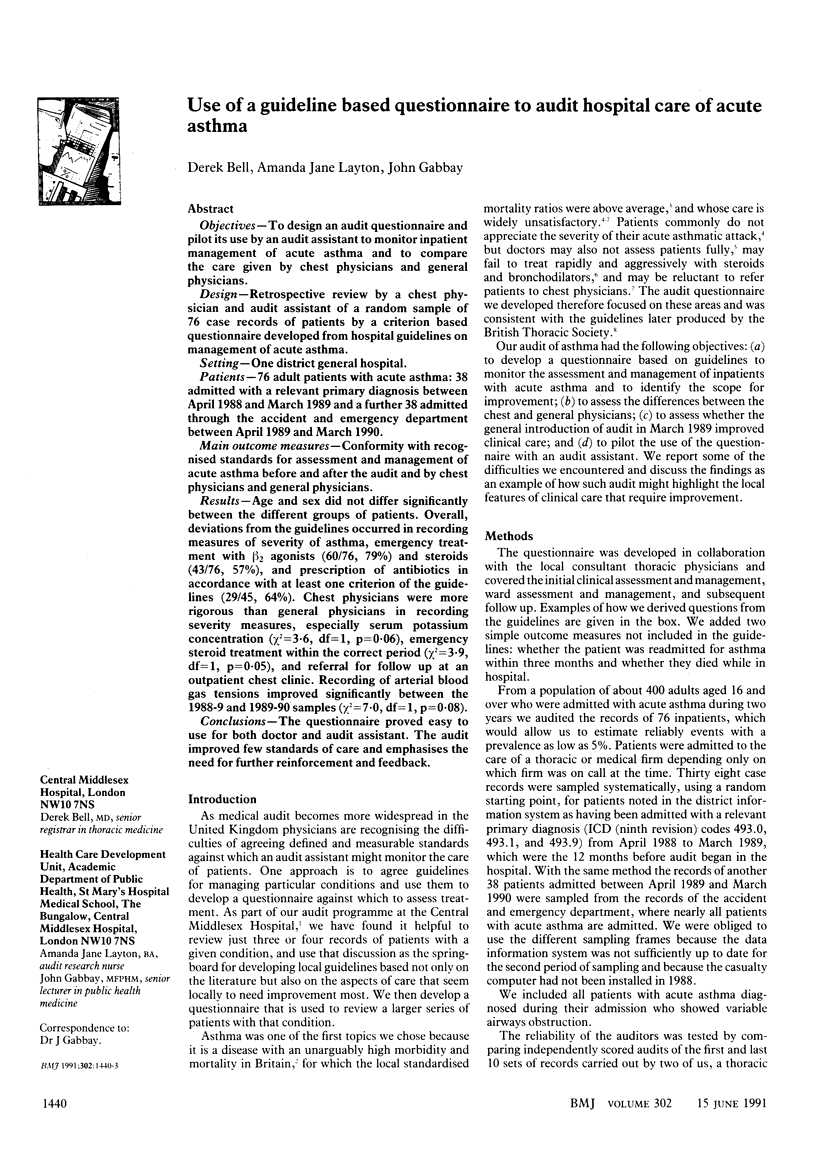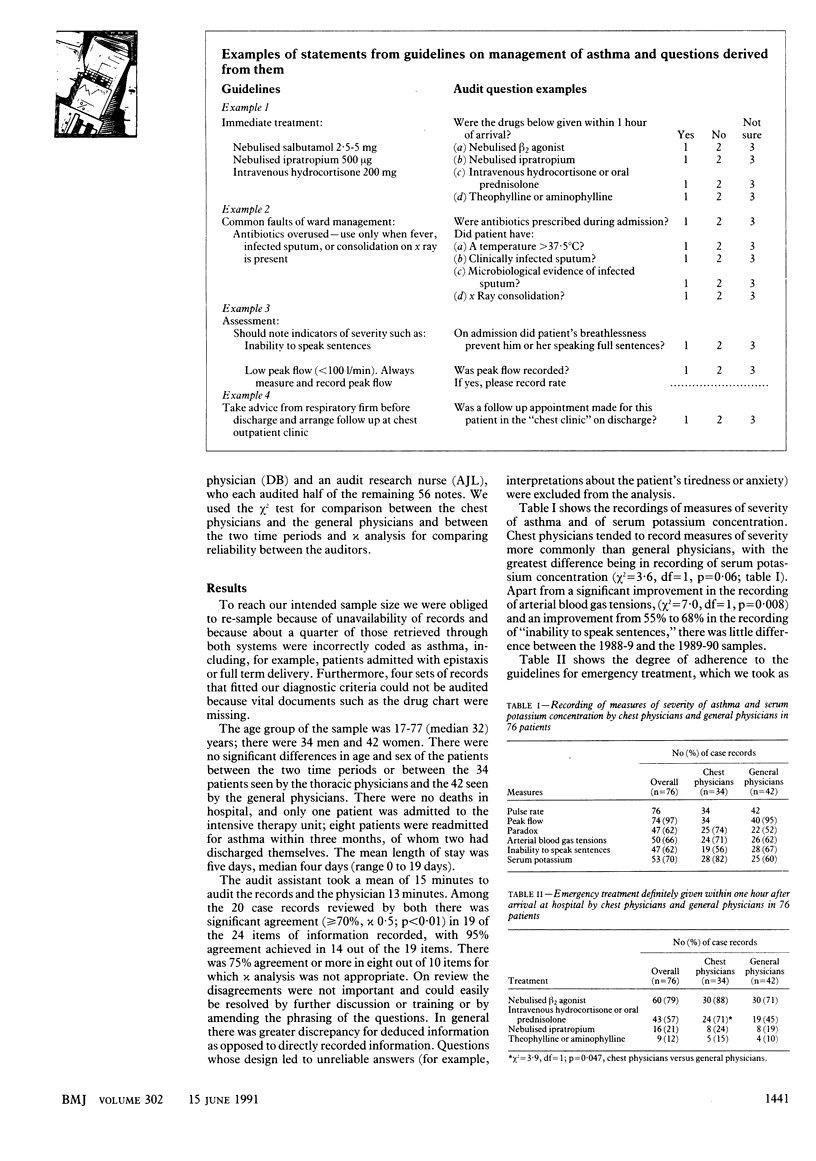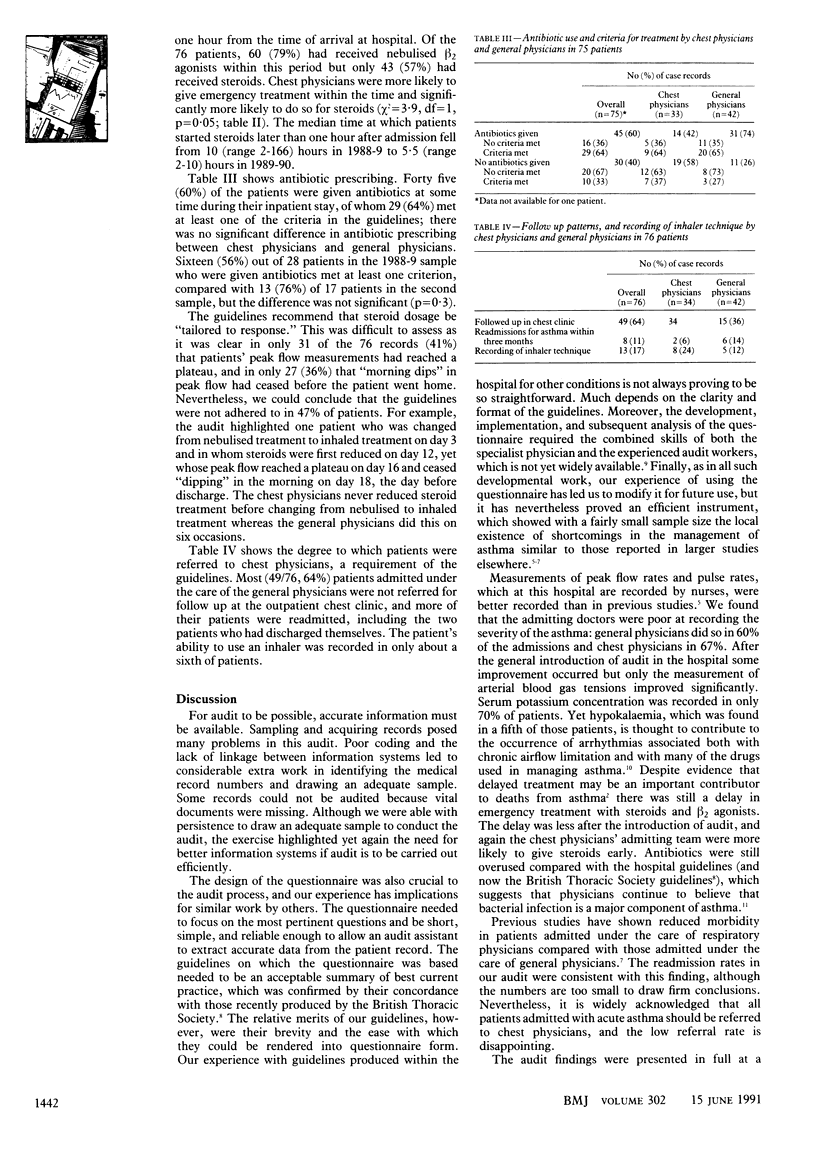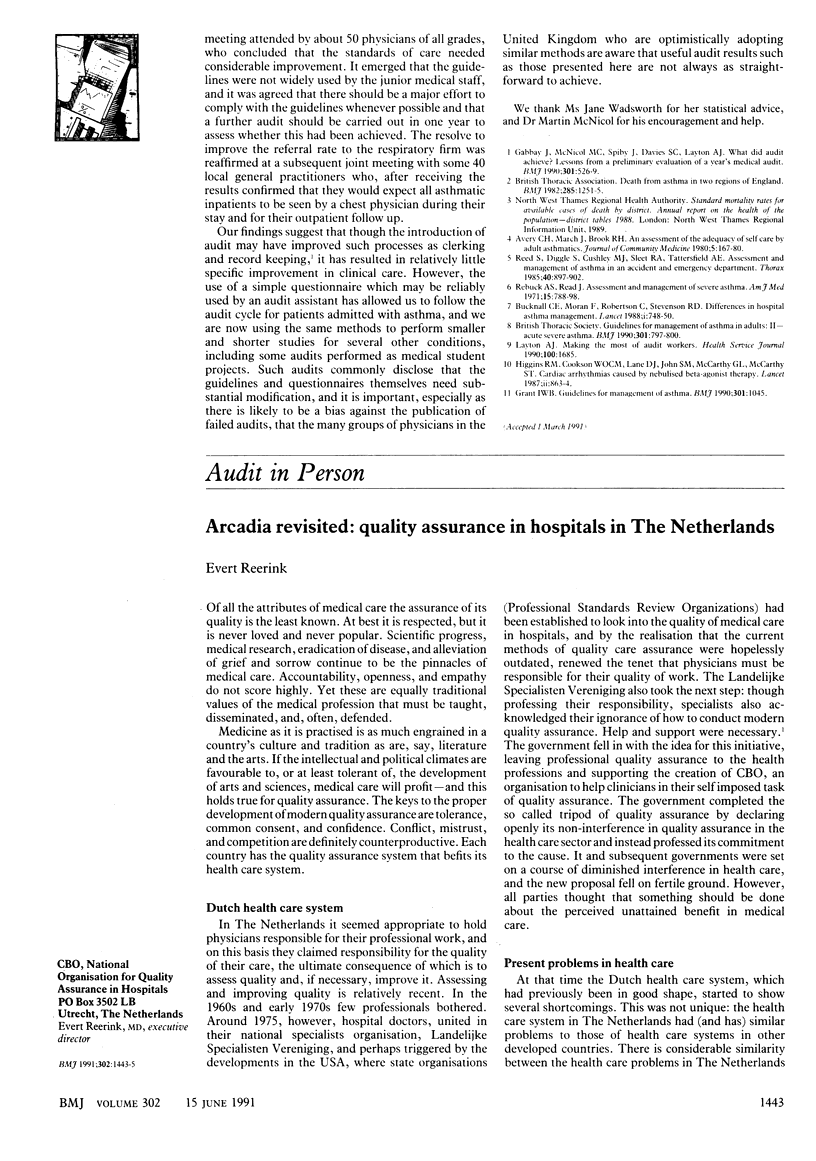Abstract
OBJECTIVES--To design an audit questionnaire and pilot its use by an audit assistant to monitor inpatient management of acute asthma and to compare the care given by chest physicians and general physicians. DESIGN--Retrospective review by a chest physician and audit assistant of a random sample of 76 case records of patients by a criterion based questionnaire developed from hospital guidelines on management of acute asthma. SETTING--One district general hospital. PATIENTS--76 adult patients with acute asthma: 38 admitted with a relevant primary diagnosis between April 1988 and March 1989 and a further 38 admitted through the accident and emergency department between April 1989 and March 1990. MAIN OUTCOME MEASURES--Conformity with recognised standards for assessment and management of acute asthma before and after the audit and by chest physicians and general physicians. RESULTS--Age and sex did not differ significantly between the different groups of patients. Overall, deviations from the guidelines occurred in recording measures of severity of asthma, emergency treatment with beta 2 agonists (60/76, 79%) and steroids (43/76, 57%), and prescription of antibiotics in accordance with at least one criterion of the guidelines (29/45, 64%). Chest physicians were more rigorous than general physicians in recording severity measures, especially serum potassium concentration (chi 2 = 3.6, df = 1, p = 0.06), emergency steroid treatment within the correct period (chi 2 = 3.9, df = 1, p = 0.05), and referral for follow up at an outpatient chest clinic. Recording of arterial blood gas tensions improved significantly between the 1988-9 and 1989-90 samples (chi 2 = 7.0, df = 1, p = 0.08). CONCLUSIONS--The questionnaire proved easy to use for both doctor and audit assistant. The audit improved few standards of care and emphasises the need for further reinforcement and feedback.
Full text
PDF



Selected References
These references are in PubMed. This may not be the complete list of references from this article.
- Avery C. H., March J., Brook R. H. An assessment of the adequacy of self-care by adult asthmatics. J Community Health. 1980 Spring;5(3):167–180. doi: 10.1007/BF01323989. [DOI] [PubMed] [Google Scholar]
- Bucknall C. E., Robertson C., Moran F., Stevenson R. D. Differences in hospital asthma management. Lancet. 1988 Apr 2;1(8588):748–750. doi: 10.1016/s0140-6736(88)91549-8. [DOI] [PubMed] [Google Scholar]
- Gabbay J., McNicol M. C., Spiby J., Davies S. C., Layton A. J. What did audit achieve? Lessons from preliminary evaluation of a year's medical audit. BMJ. 1990 Sep 15;301(6751):526–529. doi: 10.1136/bmj.301.6751.526. [DOI] [PMC free article] [PubMed] [Google Scholar]
- Higgins R. M., Cookson W. O., Lane D. J., John S. M., McCarthy G. L., McCarthy S. T. Cardiac arrhythmias caused by nebulised beta-agonist therapy. Lancet. 1987 Oct 10;2(8563):863–864. doi: 10.1016/s0140-6736(87)91057-9. [DOI] [PubMed] [Google Scholar]
- Layton A. Making the most of audit workers. Health Serv J. 1990 Nov 8;100(5226):1685–1685. [PubMed] [Google Scholar]
- Reed S., Diggle S., Cushley M. J., Sleet R. A., Tattersfield A. E. Assessment and management of asthma in an accident and emergency department. Thorax. 1985 Dec;40(12):897–902. doi: 10.1136/thx.40.12.897. [DOI] [PMC free article] [PubMed] [Google Scholar]


